Summer in southeast Queensland is usually a time of humid days and regular afternoon storms, but this year has been extraordinarily dry. The Amberley weather station, near Ipswich, has registered just 24.6 mm so far this year, and we’ve only done marginally better at Pine Mountain. Out of curiosity, I trawled through the extensive rainfall data on the Bureau of Meteorology website to see how long it has been since Ipswich last had such a dry start to the year. One year at a time, I tallied how much rain fell between 1 January and 20 February (today). When I got to the 1970s, and realised that there has never been such a dry start to a year in my lifetime, I was amazed. Then I reached the 1960s, then the 50s. When I came to 1941, the first year recorded for Ipswich, I discovered that there has never been a year on record that has been as dry as 2019! Not only that, but the second-driest year on record (1986) managed to receive twice the rainfall as 2019 so far. I knew it had been unusually dry, but I didn’t appreciate just how exceptional the weather had been.
Needless to say, all my young trees are very stressed, and it’s been exhausting trying to keep the water up to them. Cyclone Oma is hovering somewhere off New Caledonia as I type, so with any luck it’ll head over our way. I heard meteorologists saying on the news today that no cyclone has ever reached southeast Queensland from the northeast. Well, that’s another weather record I’d love to see broken.
One effect of the drought is that many of my weeded and planted areas currently have a sparse understorey, as the various native grasses and herbs have died back. This has inadvertently created the perfect roosting habitat for White-throated Nightjars, which are very well camouflaged against the thick layer of fallen dead leaves from the stressed trees above. This one was sleeping right beside the driveway one morning, and I had already passed it twice before I noticed it.
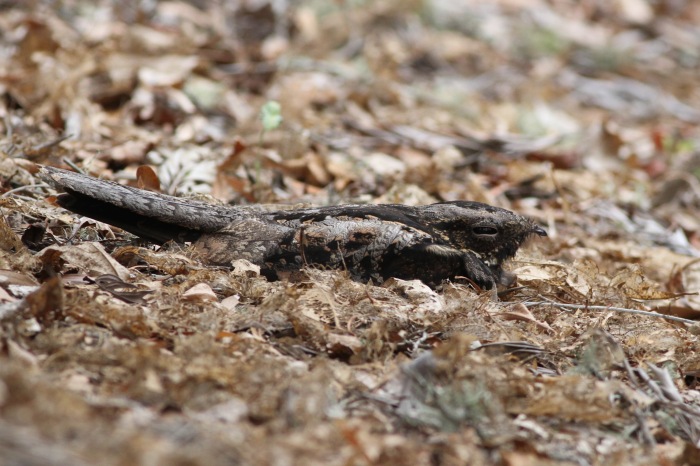
I often see them hawking above the driveway right on dusk, and their frenetic calls have been a familiar sound of recent evenings. However, this is the first time I’d actually spotted one at home sleeping during the day.
The dry weather has meant that very few of our native vine-scrub plants have produced fruit this year. I thought it was therefore worth noting which species managed to fruit. Such species are important food sources for local wildlife during what must certainly be a stressful period. The first two are not surprising, as they seem to fruit every year, regardless of weather. These are the Red Kamala (Malotus philippensis) and the Scrambling Caper (Capparis sarmentosa).
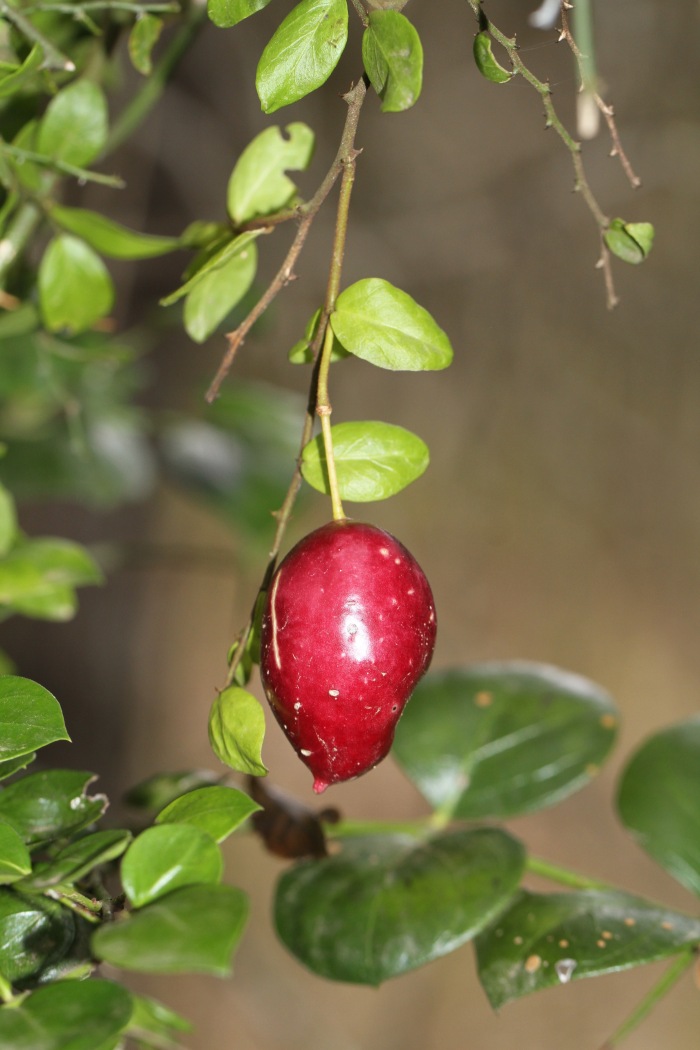
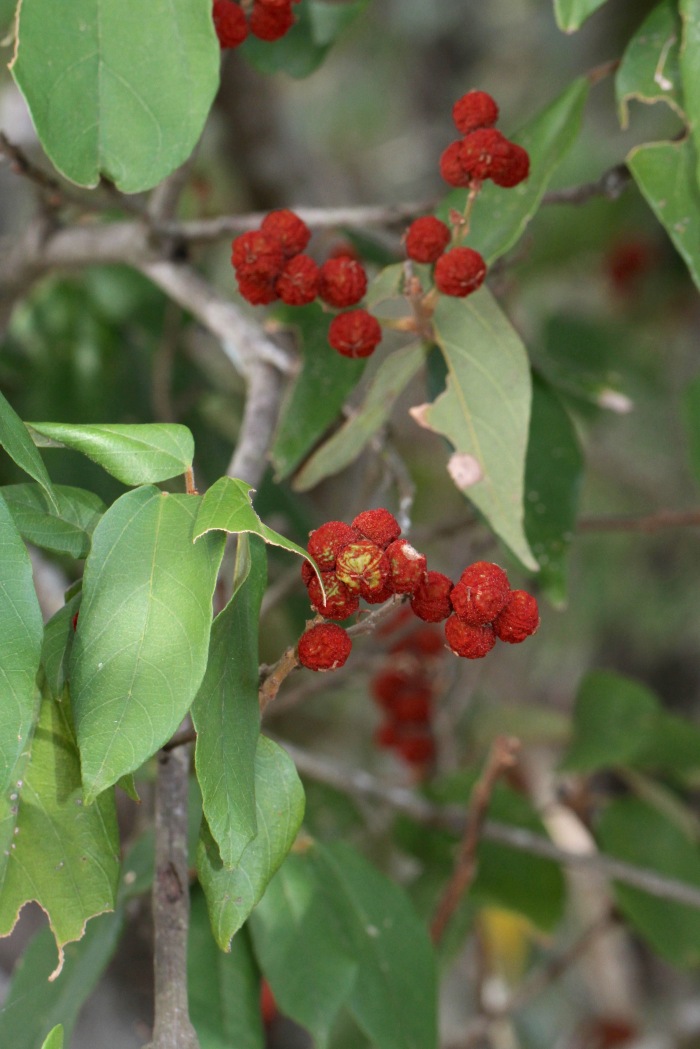
The next species was surprising, simply because most individuals of Ehretia acuminata have currently dropped their leaves and are standing dormant. I did stumble across this one small individual near the northern end of Riverside Drive that, not only still had its leaves, but also a few small fruits.
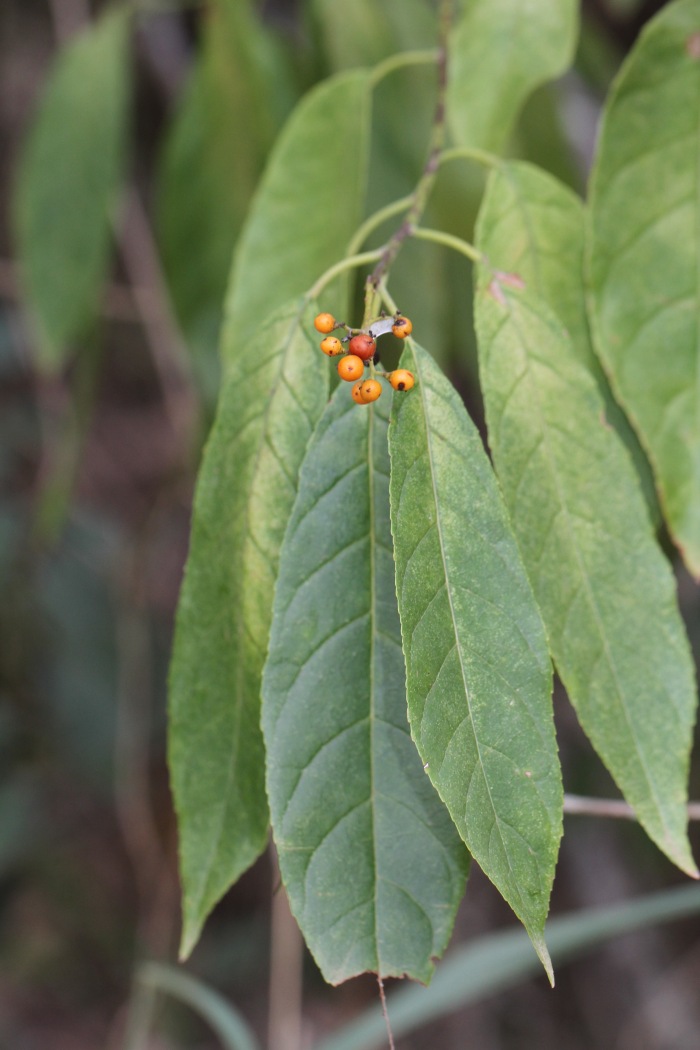
The final species was a bit of a mystery. A Pied Currawong has begun to visit my bird bath and had been regurgitating balls of medium-sized rounded seeds covered in the remnants of red fruit. These seeds didn’t look like any of the common tree species around our property, and certainly not like anything that was currently fruiting. Needless to say, I planted them in trays to see what they grew into. However, I am impatient, so also searched some of the local scrubs to see where the seeds might have come from. Sure enough, I stumbled upon one fruiting tree of Cyclophyllum coprosmoides, and it even had currawong pellets beneath it. A Rose-crowned Fruit-dove was feasting on the few remaining fruits.
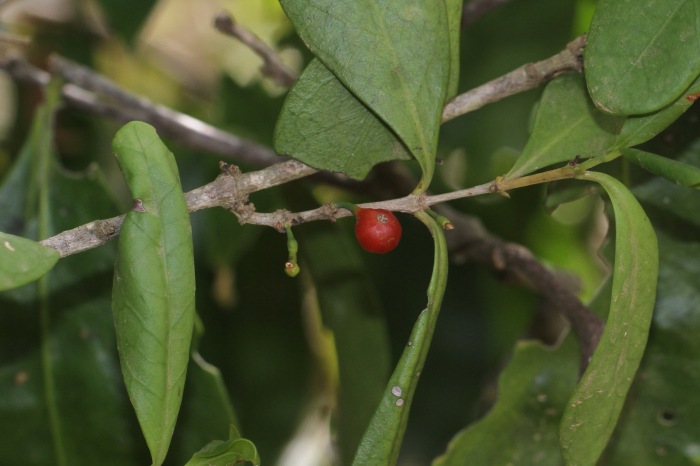
This is a small tree that occurs in relatively low density through the vine-scrubs of Pine Mountain. We have a couple of young wild ones on our property, but none are currently fruiting. The fruiting individual was about 2 km from our house, so if that was the source of the seeds at my bird bath, our garden must be a very important source of water for local birds!